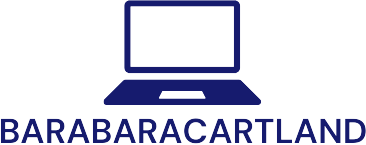Table of Contents
ToggleLearning Norwegian might just be the best decision since deciding to binge-watch that show with the attractive Scandinavian cast. With its melodic tones and straightforward grammar, Norwegian isn’t just a language; it’s a ticket to a world of stunning fjords, cozy cabins, and the occasional Viking reenactment. Who wouldn’t want to impress friends with their ability to order a “kanelbolle” (cinnamon bun) in the land of the midnight sun?
Overview of Norwegian Language Learning
Learning Norwegian offers several advantages for learners. The language features a straightforward grammar system, making it accessible for beginners. Additionally, its melodic qualities attract those interested in linguistics and sound.
Study methods vary, including online resources, language courses, and immersion experiences. Online platforms like Duolingo or Babbel provide interactive learning options. Language courses often include structured lessons guided by experienced instructors. Immersion experiences, such as visiting Norway or engaging with native speakers, enhance practical skills and cultural understanding.
Vocabulary acquisition is essential for language mastery. Common words and phrases often create a solid foundation. Frequent practice with words like “takk” (thank you) or “hei” (hello) builds confidence in conversation.
Pronunciation plays a significant role in effective communication. Many learners find that listening to native speakers through podcasts or music improves their language skills. Practicing sounds like “ø” and “å” becomes easier with targeted exercises.
Motivation impacts progress significantly. Setting achievable goals, such as learning ten words a day, makes the learning process enjoyable. Connecting with other learners through study groups or online forums fosters a sense of community and support.
Resources for Norwegian language learning are abundant. Books, apps, and websites cater to various learning styles and preferences. Choosing the right combination maximizes engagement and retention of knowledge.
Cultural immersion complements the learning experience. Exploring Norwegian traditions, foods, and history enriches language skills. Enjoying “kanelbolle” while conversing in Norwegian embodies the essence of combining language with culture.
Benefits of Learning Norwegian

Learning Norwegian offers numerous advantages, enriching personal and professional life in multiple ways.
Cultural Insights
Cultural insights come alive when learning Norwegian. Students gain access to Norwegian literature, films, and music, deepening their appreciation of the country’s artistic heritage. Engaging with various cultural expressions allows learners to see the world through a different lens. Traditional practices such as “kulturarv” (cultural heritage) and the significance of “folklore” (traditional stories) become more meaningful. Through language, students participate in unique local festivities like “17. mai,” Norway’s Constitution Day, fostering deeper connections with the culture. Immersion in cultural aspects also enhances language retention and makes the learning experience more enjoyable.
Career Opportunities
Career opportunities expand significantly with proficiency in Norwegian. Many global companies seek bilingual employees, especially in sectors like technology, engineering, and education. Understanding Norwegian gives job seekers a competitive edge in positions that require collaboration with Scandinavian partners. Additionally, local firms often prefer candidates fluent in the language, facilitating smoother communication and teamwork. Networking becomes easier when one can converse with Norwegian speakers. Openings in translation, tourism, and international relations are particularly appealing for language learners, reflecting the growing importance of the Nordic market in the global economy.
Resources for Learning Norwegian
Learning Norwegian entails various resources that enhance language acquisition and cultural understanding. They include online courses, apps, books, and audiobooks.
Online Courses and Apps
Many learners turn to online platforms for structured learning. Duolingo and Babbel stand out as popular choices for beginners due to their engaging methods. Both apps feature gamified lessons that help users practice vocabulary and pronunciation. Furthermore, NorwegianClass101 provides video lessons tailored to different skill levels. LingQ focuses on reading alongside listening practice to improve comprehension. These resources offer flexibility, allowing learners to study at their own pace while accessing interactive content.
Books and Audiobooks
Learners often find that books provide a deeper understanding of grammar and vocabulary. “Norwegian for Beginners” is an excellent resource for newcomers, featuring exercises and practical examples. Additionally, “Learn Norwegian Like a Native” emphasizes conversational skills through dialogues. Audiobook options, such as “Norwegian Vocabulary Builder,” facilitate pronunciation practice and listening comprehension. For those interested in cultural insights, traditional Norwegian literature enriches the learning experience while familiarizing learners with the language in context. Overall, these resources enhance language proficiency and cultural appreciation.
Tips for Successful Language Learning
Effective language learning requires strategy and commitment. Adopting specific techniques can enhance proficiency and enjoyment.
Setting Realistic Goals
Establishing achievable benchmarks promotes consistent progress. Focus on short-term objectives, such as mastering five new words weekly. Break down larger goals, enabling manageable milestones. Track accomplishments to maintain motivation and adjust strategies as needed. Celebrating small victories reinforces commitment to the language journey. Consider integrating goals related to Norwegian culture, such as cooking traditional dishes or understanding local customs. Engage with the language daily, even in brief sessions, to build a habit that fosters progress.
Practicing with Native Speakers
Interacting with native speakers accelerates language acquisition. Seek opportunities through language exchange forums or local meetups. Online platforms such as Tandem or HelloTalk connect learners with conversational partners. Consistent practice enhances pronunciation and comprehension skills, providing real-time feedback. Local language clubs may also offer structured speaking opportunities. Participating in cultural events can deepen connections with native speakers, enriching both language skills and cultural understanding. Repeated exposure to natural speech patterns improves fluency and builds confidence in conversations.
Challenges in Norwegian Language Learning
Learning Norwegian presents several challenges that learners often encounter. Pronunciation can be particularly difficult due to unique sounds not found in English. Nuances in vowel sounds, such as the difference between “y” and “u,” can lead to confusion.
Grammar poses its own set of complexities as well. The presence of two official written forms, Bokmål and Nynorsk, can overwhelm learners. Mastering one form may lead to complications when understanding the other. Furthermore, the use of definite and indefinite articles can seem challenging, as they depend on noun gender.
Vocabulary acquisition represents another hurdle. Many Norwegian words are similar to English, but false cognates can create misunderstandings. Familiarizing oneself with regional dialects adds to the difficulty since variations in vocabulary exist throughout Norway.
Engaging with native speakers can feel intimidating for learners. Often, they may fear making mistakes in conversation, which might inhibit practice. Building confidence in speaking requires consistent interactions and a supportive environment.
Finding appropriate resources also presents challenges. While numerous apps and online courses exist, identifying which resources provide the best results can feel overwhelming. Selecting materials that align with personal learning styles ensures effective study habits over time.
Cultural insights offer a unique perspective but may complicate language learning. Understanding local traditions, idioms, and humor often requires time invested in the culture. Exposure to Norwegian literature and media can help bridge this gap but demands dedicated effort.
Commitment plays a crucial role in overcoming obstacles. Regular, daily practice fosters familiarity and helps solidify language skills. Ultimately, persistence serves as a key factor in navigating the complexities of learning Norwegian.
Learning Norwegian offers a unique blend of cultural insights and practical benefits. As learners engage with the language they not only enhance their communication skills but also gain access to Norway’s rich traditions and landscapes. The variety of resources available makes it easier than ever to embark on this linguistic journey.
By setting realistic goals and practicing consistently with native speakers, learners can overcome challenges and make steady progress. Embracing the language opens doors to exciting opportunities both personally and professionally. With dedication and the right strategies, mastering Norwegian can be a rewarding experience that enriches one’s life in numerous ways.




